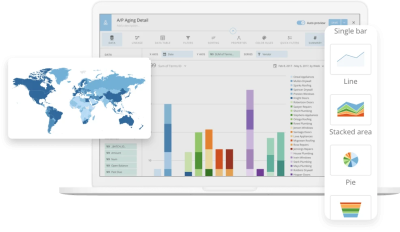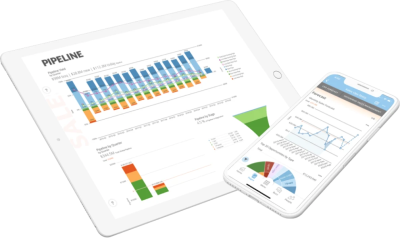Discover the value of big data analytics
Introduction
The often-challenging process of analyzing large amounts of data to find information, like market trends, hidden patterns, correlations, and customer preferences, that might assist businesses in making wise decisions about their operations. This is known as big data analytics.
Generally speaking, data analytics tools and processes give businesses a way to examine data sets and obtain fresh data. Big data analytics belongs to a kind of advanced analytics, which comprises sophisticated applications that incorporate aspects like statistical algorithms, what-if analysis, and predictive models.
The importance of big data analytics
Big data analytics technologies and software can be used by organizations to drive decision-making backed by data. These decisions can enhance business outcomes. Benefits could include enhanced client personalization, new revenue opportunities, more effective marketing, and operational efficiency. These advantages can give your organization an edge over competitors.
How does big data analytics work?
Increasing quantities of structured transaction data—and also other data types not often employed by traditional BI analytics tools—are collected, processed, cleaned, and analyzed by statisticians, data analysts, predictive modelers, data scientists, and other analytics specialists.
The big data analytics process consists of a few steps, which are outlined below:
1. Data is gathered from a variety of sources
Data frequently consists of both semi-structured and unstructured material. The data streams used by each company will vary, but some frequent sources include:
- Internet clickstream data
- Cloud applications
- Mobile applications
- Web server logs
- Text from client emails and survey responses
- Social media posts
- Data from mobile phones
- Internet of things (IoT) devices.
2. Data is prepared for analysis
Data professionals must correctly partition, configure, and manage data after it has been gathered and kept in a data lake or warehouse. Better productivity from analytical queries results from thorough data preparation and processing.
3. Using analytics software, the cleaned data is examined.
This examination could include
- Data mining, which involves searching through data collections for patterns and relationships
- Predictive analytics, which is creating models to anticipate customer behavior and other upcoming events, scenarios, and trends.
- Machine learning
- Deep learning, a more sophisticated branch of machine learning
- Statistical analyses
- Data visualization using business intelligence (BI) software

Important big data analytics tools and technologies
Big data analytics procedures are supported by a wide variety of tools and technology. The following are typical technologies and solutions for big data analytics processes:
- Predictive analytics software utilizes machine learning (ML) and statistical algorithms to forecast the results of future events by processing vast volumes of complex data. Predictive analytics solutions are used by businesses for operations, risk assessment, marketing, and fraud detection.
- Tools for stream analytics are employed to filter, collect, and analyze large amounts of data which may be kept on a different platform or in a variety of formats.
- Data that is distributed and replicated, typically on a non-relational database. In order to enable low-latency access, protect against independent node failures, recover lost or corrupted huge data, etc., this may be necessary.
- NoSQL databases are useful when dealing with big, distributed datasets because they manage data in a non-relational way. They are perfect for raw as well as unstructured data because they don’t require the data to have a set format.
- A data lake is a sizable storage space that keeps unprocessed data in native formats until it is required. The architecture of data lakes is flat.
- A data warehouse is a repository for vast amounts of data gathered from various sources. Typically, data warehouses utilize predetermined schemas to store data.
- Knowledge discovery and mining technologies make possible the large-scale mining of both unstructured and structured big data.
- In-memory data fabrics spread out big volumes of data over system memory resources. This makes it possible to obtain and analyze data with little delay.
- Data virtualization offers unrestricted access to data on all platforms.
- Data integration software, which makes it possible to integrate big data across several platforms, notably MongoDB, Apache, Hadoop, and Amazon EMR.
- Data quality software purifies and enhances large data collections.
Benefits of big data analytics
The benefits of big data analytics include the following:
- Quickly evaluating bulk data amounts from various sources
- Making quick, more informed decisions to strategize effectively, which can assist and enhance operations, supply chain, and other areas where strategic decisions are made
- Cost savings that may be brought about by improved and new business processes.
- A deeper understanding of client wants, behaviors, and sentiment can help to improve marketing insights and supply data for product development
- Improved risk management tactics that are based on in-depth data sampling

Challenges of big data analytics
Despite the extensive advantages of adopting big data analytics, there are several difficulties that must be considered:
Data accessibility
Data processing and storage become more challenging as data volume increases. To make big data usable by analysts and data scientists with less experience, it must be appropriately kept and managed.
Maintenance of data quality
Management of data quality for bulk data requires a substantial effort, resources, and amount of time to maintain due to the large data volumes coming in from many sources and in various forms.
Data security
Big data systems’ complexity poses particular security difficulties. It can be difficult to properly address security issues in the complex big data environment.
Organizations must learn how to choose the best tool that complements users’ needs and infrastructure from the wide range of big data analytics platforms and tools that are readily available on the market. Some firms are having trouble filling the voids because of a possible dearth of internal analytics talent and the high hiring cost of skilled data scientists and engineers.
Conclusion
Organizations must learn how to choose the best tool that complements users’ needs and infrastructure from the wide range of big data analytics platforms and tools that are readily available on the market.
Be sure that your organization invests in a big data analytics tool that provides all the necessary functions to meet its needs. By doing this, your company can reap the benefits of effectively analyzing big data.
Check out some related resources:

8 Best AI Tools for Data Visualization

The 11 Best Big Data Analytics Tools in 2025






